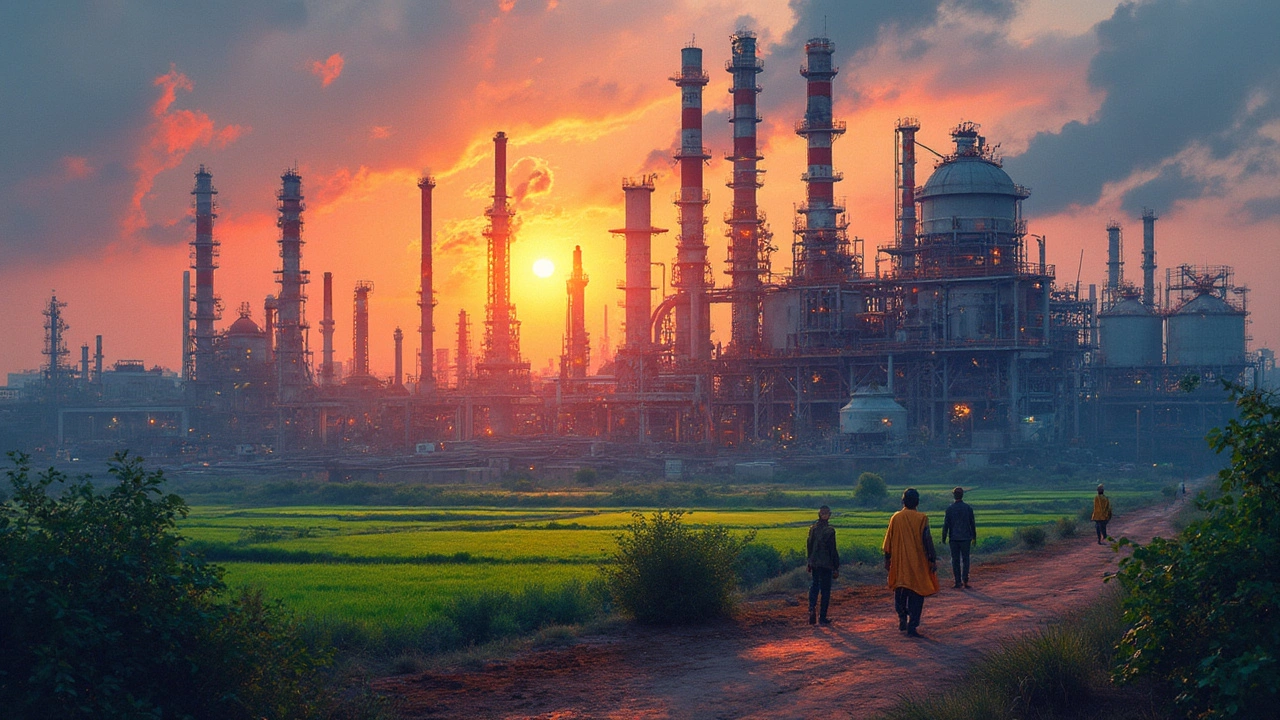Chemical Industry in India: Trends, Challenges, and Opportunities
When looking at Chemical Industry in India, the sector that creates basic and specialty chemicals for agriculture, pharmaceuticals, plastics, and textiles across the country. Also known as Indian chemical sector, it fuels downstream markets and fuels export growth. Plastics Manufacturing, the conversion of polymer resins into finished goods relies heavily on chemical feedstocks, while the Pharmaceutical Industry, the network that develops and produces medicines demands high‑purity specialty chemicals. The Textile Industry, the sector that processes fibers into fabrics uses dyes, solvents, and finishing agents sourced from this chemical base. Together, these connections create a web where the chemical sector enables product innovation, requires robust supply‑chain management, and influences pricing across multiple industries.
Key Drivers Shaping the Sector
India’s growing population pushes demand for fertilizers, leading to a surge in agro‑chemical production. At the same time, rising disposable income fuels consumer goods, which in turn boosts demand for polymers and synthetic fibers. Government initiatives like the Production‑Linked Incentive (PLI) scheme for specialty chemicals aim to attract foreign investment and upgrade technology. This policy push means manufacturers are adopting greener processes, such as bio‑based feedstocks, to meet stricter environmental norms. As a result, the sector is seeing a shift from bulk petrochemical output toward high‑value specialty chemicals that serve niche markets like electronics, healthcare, and renewable energy.
Supply‑chain resilience has become a hot topic after recent global disruptions. Chemical plants now prioritize digital twins and AI‑driven demand forecasting to reduce inventory lag. This directly benefits downstream players—plastics producers can better align resin orders, pharma firms can secure critical raw materials, and textile mills can plan dye purchases with fewer surprise price spikes. In practice, a well‑linked supply chain shortens lead times, cuts costs, and improves product quality across the board.
Innovation isn’t limited to product chemistry. Companies are investing in circular economy models, recycling chemical waste into usable feedstock. For example, plastic waste is being depolymerized back into monomers, feeding new polymer production cycles. Such initiatives lower raw‑material costs and help meet sustainability targets set by major exporters. The trend is also spurring collaborations between chemical firms, research institutes, and startups working on enzyme‑based catalysts, which promise lower energy consumption and fewer emissions.
Looking ahead, three trends will dominate the conversation: (1) a push toward specialty chemicals tailored for high‑tech applications, (2) stronger regulatory frameworks that favor greener production, and (3) deeper integration of digital tools for real‑time monitoring. Companies that adapt quickly will capture market share, while laggards risk falling behind in both cost competitiveness and compliance. The following collection of articles dives into these topics, offering data‑backed analysis, sector‑specific case studies, and practical tips for anyone navigating India’s chemical landscape. Stay tuned—you’ll find everything from high‑demand product forecasts to detailed breakdowns of key players, all designed to help you make informed decisions in this fast‑moving industry.
